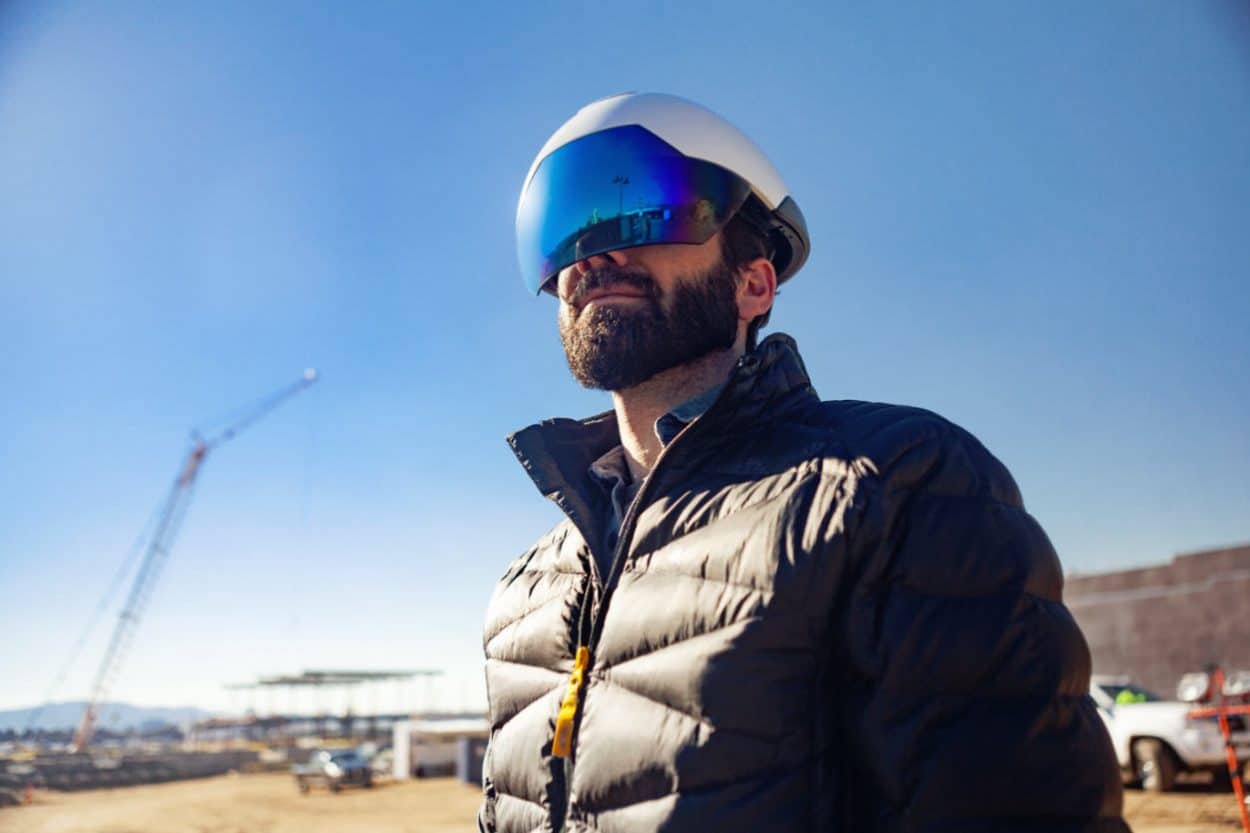News coverage of virtual reality (VR) has exploded since Facebook’s Oculus Rift was released this year. Now, the term augmented reality (AR) is becoming a household term thanks to Nintendo’s hit game, Pokémon Go. Beyond gaming, AR can help architects, engineers and other professionals. But such applications require a great headset. DirectIndustry e-magazine offers some tips on making the best choice.
AR may be a bit more promising than virtual reality for industrial applications, given its fundamental difference—it allows you to layer virtual information right on top of the real-world background. The potential for visualization, training, maintenance and collaboration in situ is far greater when the two are combined. Two devices illustrate the current state of industrial applications.
1. DAQRI: The Smart Helmet
The DAQRI Smart Helmet (DSH) is a combination safety helmet and AR headset that overlays virtual instructions, safety information, training and visual mapping on a real-world background. Workers in the oil and gas, automation and manufacturing sectors often need to understand complicated instructions to perform complex processes. The DSH enables them to see digital information overlying different contexts—a Siemens controller, a scanning device or quality control metrology equipment.
The helmet comes with its own battery and docking station. The price varies from $5,000 to $15,000, depending on customization options. Autodesk, GE and Hyperloop are currently testing it.
DAQRI CEO Brian Mullins says:
A field engineer may be responsible for 600 different work packages, using some perhaps only once in a career. Having the added data when it’s needed makes a big impact. Augmented reality is going to be a top-down industry, similar to the evolution of smartphones from enterprise to consumer devices. At first, people only used them to stay connected at work and make decisions, and to transfer knowledge as needed. Slowly, over the course of decades, they evolved into today’s smartphone. We think this is beginning to happen with augmented reality.
The device’s face shield and injection-molded plastic helmet are ANSI-compliant. The inner part of the helmet’s shell is a combination of cast aluminum and carbon fiber composite.
The DAQRI 13-megapixel HD camera recognizes colors, 2-D targets and can track moving objects. The helmet uses Intel’s RealSense technology with two built-in infrared cameras. DAQRI integrates them with an infrared laser projector that can sense depth by measuring deflected infrared light. A low-resolution camera is linked to an industrial-grade inertial measurement unit (IMU), enabling the helmet to compute its relative position in real time. It also comes with four microphones, which allow users to call a technical expert in the company.
2. Metavision’s Meta 2: Neuroscience Drives the Interface
The Meta 2 has a 90-degree field of view, a tremendous breakthrough for industrial applications like training, maintenance and manufacturing. Being physically tethered to a workstation limits all kinds of training applications and use on a factory floor for assembly or maintenance.
According to CEO Meron Gribetz:
The idea here is for people to share holograms, making them a lot more connected with the work and with each other. The neural mechanism that explains it is called mirror neurons. This subsystem of our minds suggests that we understand collaborative work much better when we can see each other’s faces and hands in full 3D at zero latency. To leverage that, everything has to be visible south of the eyebrows—you can see my eyes and I can see yours. We’re networking the glasses, so I can send you a hologram of a 3D model. That way, we’ll both see it from our relative perspectives. Neuroscience is really driving the design of our interfaces.
Metavision is accepting pre-orders for the Meta 2 developer kit, priced at $949. The devices are expected to ship in Q3 of 2016.











